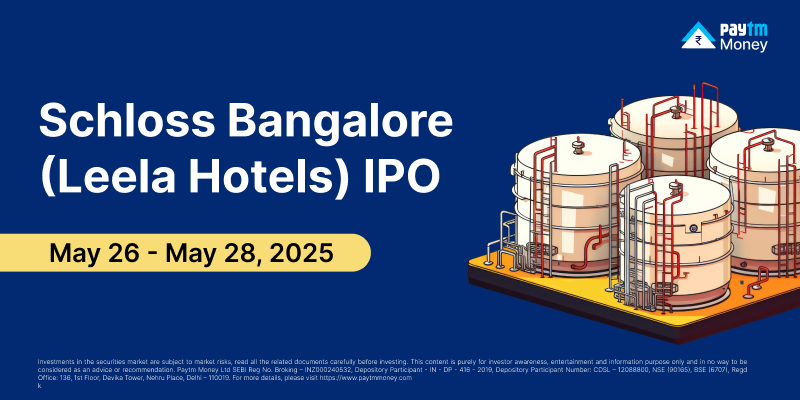How To Churn Your Mutual Fund Portfolio?10 min read
Churning is not usually a good thing. Most experts advise against the frequent buying and selling of mutual funds. But occasionally, if a mutual fund isn’t working for you, it might make sense to churn this part of your portfolio and make the necessary changes.
1. Mutual Funds – An Introduction
If you’re an expert, you can skip this section. But read on if you’d like to revise the basics. Though it never hurts to revise your basics.
Mutual funds are investment vehicles that pool money from multiple investors to purchase a diversified portfolio of stocks, bonds, or other securities. When you invest in a mutual fund, you own a share of the fund and participate in the gains and losses of the underlying securities held by the fund. Mutual funds are managed by professional fund managers who use their expertise to select securities that align with the fund’s investment objective. The fund’s performance is based on the performance of the underlying securities in the portfolio.
There are many types of mutual funds out there including equity funds, bond funds, balanced funds, and index funds.
Equity funds invest primarily in stocks, while bond funds invest in bonds and other fixed-income securities. Balanced funds invest in a mix of stocks and bonds, while index funds track a specific market index, such as SENSEX & NIFTY50.
Mutual funds offer several advantages to investors. They provide access to professional investment management, offer diversification, and the ability to invest in a wide range of securities with relatively small amounts of money.
Additionally, mutual funds can be bought and sold easily, making them a flexible investment option.
2. Churning a Mutual Fund Portfolio
Now to churning. Churning a mutual fund portfolio refers to frequently buying and selling mutual fund units within a short period with the aim of generating short-term profits.
Some investors believe that churning can yield higher returns. Mutual fund churning provides opportunities for short-term profits by taking advantage of market fluctuations and generating short-term gains.
Mutual fund churning also allows for a more diversified portfolio by investing across different asset classes, sectors, and geographies. Churning also provides flexibility to make adjustments to their portfolio quickly and easily. This can be particularly useful in response to changes in market conditions or economic indicators.
Steps to churn your mutual fund portfolio:
- Review your investment goals: Before making any changes to your mutual fund portfolio, it’s essential to revisit your investment goals, risk tolerance, and time horizon. Based on your goals, you can identify the mutual funds that align with your investment objectives.
- Evaluate your existing portfolio: Review your existing mutual fund portfolio and assess the performance of each fund. Identify the underperforming funds and those that no longer align with your investment objectives. This process can help you identify funds that are ripe for selling.
- Identify new mutual funds: Based on your investment objectives, risk tolerance, and time horizon, research and identify new mutual funds to invest in. Consider factors such as historical performance, fund management, expense ratios, and asset allocation.
- Set your selling strategy: Decide which funds you want to sell and the selling strategy you will use. You can opt to sell all of the underperforming funds or gradually sell a portion of the funds.
- Execute the churning strategy: Once you have identified the funds to sell, you can proceed to sell the units and reinvest the proceeds into the new mutual funds. However, keep in mind that frequent trading can result in higher transaction costs and taxes, which can eat into your returns.
Overall, churning your mutual fund portfolio should be done with caution and only when necessary to align with your investment objectives. You may want to consult with a financial advisor or conduct thorough research before making any changes to your mutual fund portfolio.
3. When should one Churn Mutual Funds?
Market conditions, funds’ internal circumstances, personal emergencies and many other factors might motivate you to churn your mutual fund portfolio. Let’s discuss some of these factors in detail. For example, if there is a significant change in the fund structure, such as a change in the investment objective or strategy, investors may want to evaluate if the fund still aligns with their investment goals. Secondly, a change in the fund manager can have a significant impact on the fund’s performance. If the new manager has a different investment philosophy or track record, it may be worth reassessing the fund’s suitability for your portfolio.
Further, if a fund has consistently underperformed its benchmark (or peers) over an extended period, it may be a sign of poor management or an unsuitable investment. Investors may want to consider switching to a better-performing fund. Also, Some funds may become too large to efficiently manage investments, resulting in decreased flexibility and potentially lower returns. Such an event may force investors to evaluate if the fund’s size is impacting its performance.
Looking at it from the investor’s perspective, when your financial goals change, you may need to adjust your mutual fund portfolio to ensure that it aligns with your revised objectives. Regular portfolio rebalancing can help you maintain an appropriate asset allocation, ensuring that the portfolio aligns with your risk tolerance and investment goals.
In the event of an emergency, you may need to liquidate your mutual fund investments to meet their financial obligations. In unfavorable market conditions, such as a significant economic downturn or a bear market, you may want to re-evaluate your portfolio’s risk exposure and consider reallocating your investments accordingly.
Here are some real world examples to help you understand some of these scenarios in detail:
- Change in market conditions: As per the amendments in Finance Bill 2023, returns from debt oriented mutual fund schemes will also be treated as short-term capital gain, irrespective of the period of holding. As a result, mutual fund managers will look to move towards an equity-heavy asset allocation. Case in point, the recently launched Quant Dynamic Asset Allocation fund has changed its taxation from debt to equity. As shown in the diagram below, this fund will now move towards an equity-heavy allocation as opposed to the debt-heavy allocation announced at the time of its NFO.

The diagram also shows that this new allocation strategy will increase the fund’s liquidity, while also impacting the risk and return profile. Risk-averse investors, with an equally low risk appetite for volatility will have a lot to think about before taking a decision to stay invested or churn.
- Fund performance vis-a-vis benchmark: Evaluating a fund’s performance against its benchmark depends on a variety of factors. You need to evaluate the reason for underperformance, measure your risk tolerance, review your investment goals and consider your time horizon before making a decision to invest or redeem. Mutual funds are considered long-term investments, therefore, we should not let short-term fluctuations cloud our judgment. But, if the fund is performing consistently worse than its benchmark, a decision might have to be made.
| Fund | Benchmark | 3-year Return | Benchmark Return | 5-year Return | Benchmark Return |
| Quantum Long Term Equity Fund | BSE 500 TRI | 26.7% | 28.64% | 9.1% | 11.84% |
| HDFC Hybrid Equity Fund | NIFTY 50 Hybrid Composite Debt 65:35 Index | 26.2% | 26.97% | 12% | 11.27% |
| Franklin India Bluechip Fund | Nifty 100 TRI | 26.1% | 25.87% | 10.3% | 10.29% |
| Birla Sun Life Frontline Equity Fund | Nifty 100 TRI | 26.8% | 25.87% | 11% | 11.59% |
| DSP Black Rock Top 100 Equity Fund | BSE 100 TRI | 22.9% | 27.41% | 9.1% | 12.29% |
Source: Paytm Money & Moneycontrol.com
From the above table, it is clear that you should be looking for a fund that has outperformed its benchmark over several years with a good enough margin. If it has consistently done that, you can be clear that fund management is going well. In case any of the funds you own don’t seem to be performing well enough, it sure is time to do some restructuring in your portfolio.
- Change in fund manager: This event can have a significant impact on mutual fund performance, both positive and negative. A new fund manager may bring in a fresh perspective, new investment ideas, and better risk management, leading to improved returns for investors. On the other hand, if the new manager’s strategy doesn’t match the fund’s goals, it may result in a dip in performance.

The above graph is an example of an Indian mutual fund that had a change in its fund management. You can see a prominent dip in the performance of the fund at a certain point as the new fund manager tried to calibrate his strategies to the nature of the fund. But then, the synergy was found and the fund performed well under the new manager as well. This is a prime example of not letting short term hiccups get the better of you. But, it is also true that if this kind of performance continues for a longer period of time, you might have to consider other alternatives.
4. Unexpected Costs in Mutual Fund Churning
Buying and selling mutual funds at a rapid rate can result in hidden expenses that can eat into your returns. Before engaging in frequent trading activity, it’s important to carefully consider the potential disadvantages and risks, as well as your overall investment goals and objectives. Some unexpected expenses that might be overlooked by investors are mentioned below:
- Sales charges or loads: When you buy or sell mutual fund shares, you may be subject to a sales charge or load, which is a fee that goes to the broker or financial advisor who sold you the fund. Loads can be front-end (charged when you buy the fund), back-end (charged when you sell the fund), or level (charged annually).
- Redemption fees: Some mutual funds charge a redemption fee when you sell your shares, particularly if you sell them within a certain timeframe (30 days for example). This fee is designed to discourage short-term trading and can be as high as 2% of the redemption amount.
- Bid-ask spread: When you buy or Exchange Traded Funds(ETFs), you may be subject to a bid-ask spread, which is the difference between the price at which you can buy shares (the ask price) and the price at which you can sell shares (the bid price). This spread is essentially a hidden cost that reduces your returns. This is relevant in the case of ETFs only.
- Expense ratios: Mutual funds charge annual fees known as expense ratios, which cover the costs of managing the fund. These fees can vary widely and can significantly impact your returns, particularly if you’re churning your investments frequently.
- Taxes: When you sell mutual fund shares for a gain, you’ll be subject to capital gains taxes, which can further eat into your returns. Short-term capital gains tax is higher than that for long-term gains.
5. MF Churning – A Conclusion
Before engaging in frequent churning activity, it’s important to evaluate your investment goals and objectives, your tolerance for risk and also your overall investment strategy. The key to successful investing is to develop a well-diversified portfolio that aligns with your long-term financial goals and objectives. It is also essential to maintain a disciplined investment approach that focuses on managing risk and minimizing expenses. By taking a patient and disciplined approach to investing, you can build a successful investment portfolio that can help you achieve your financial goals over time.
Disclaimer- Investment in securities market are subject to market risks, read all the related documents carefully before investing. This content is purely for information purpose only and in no way to be considered as an advice or recommendation. Brokerage will not exceed the SEBI prescribed limit. Paytm Money Ltd. SEBI Reg No Broking – INZ000240532. NSE (90165), BSE( 6707) , BSE STAR MF Member ID – 53873. Regd. Office: 136, 1st Floor, Devika Tower, Nehru Place, Delhi – 110019. For complete T&C and Disclaimers, visit www.paytmmoney.com/stocks/policies/terms




